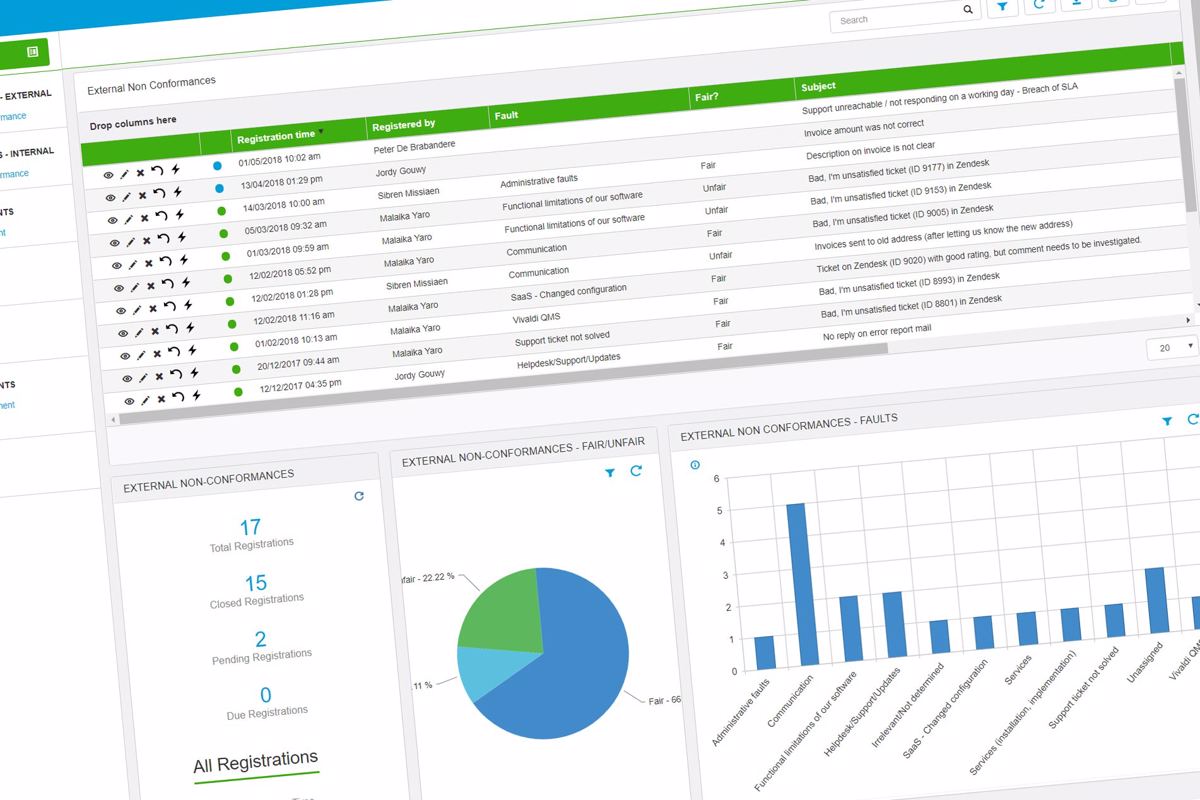Visibility in reporting is key to this central requirement. So what do you need to facilitate this? Here we will look at some things to identify, introduce, or at least keep in mind, and also things to be aware of that can, by their sheer presence, reduce focus on this topic.
Does your organization need an eye exam?
Why is visibility important?
So, what’s the big deal? Why does my organization need visibility in terms of QA? The answer is quite simple. Visibility helps you identify problems. Problems are insidious in their nature, but if you can end their covert, time-consuming nature, you can be satisfied that your QA administration is healthy, and will be able to identify any essential concerns.
The trick is to tend to the sick before it becomes a pandemic and a great QA reporting system will allow you to detect sickness before it starts infecting your bottom line.
Not just a pretty face
To have an integrated QA solution is to have a way to have a quick look at the health of workflows, processes, and projects, inclusive of any areas that may need addressing. To the untrained eye, pictures are just a visual way to see things without investing too much energy into having a clear and informed overall awareness.
For those of us more evolved, however, what they do provide is a more than reasonably accurate state of play. Graphics provide visibility that a forty-page report won’t allow. Trends and even fault categories can provide an insight more valuable than you may have first thought.
In addition, built-in statistical elements allow for speedier visual analysis. If your reporting doesn’t have this element, get one that does. Having a dashboard of key areas can save any organization a great deal of time, and we all know time is money.
The Feedback Loop
It’s great to have all this technology integrated into your QA routines and planning, but one of the most important things to remember is that the feedback from staff is also an essential aspect of knowing what is occurring on a daily basis.
Assertive product and process escalation point methods should always be in place to adequately prevent concerns from snowballing. Your people are your front line and your first line of defense. Their experiences and attention on a day-to-day basis will always provide invaluable insight.
The Blame Game
One thing guaranteed to send good QA visibility out the window is to engage in finger-pointing. Not only is it negative, but blaming other departments or individuals causes unnecessary friction and resentment.
If you have a culture of blame, it needs to be remedied immediately if you are to have healthy and successful quality monitoring. Remember the saying, “We’re all in this together”?
What do you expect?
Getting to the bottom of what your organization expects from monitoring and subsequent reporting is a fundamental first step. This will form a foundation for your QA requirements that you can always fall back on if things go wrong, or simply need to be tweaked a little. Every business differs in its compliance obligations, therefore we will all have different expectations and pressures.
A construction company will have a completely different view of quality control than a restaurant. The differences in that of the chemical industry will vary again.
Regardless, well-defined expectations are everyone’s common denominator. It’s amazing what clarity this will bring. Visibility not only helps define and clarify business opportunities and goals for the future but can also equal customer satisfaction. After all, the organization that is confident in its system’s ability to foresee problems, will also have the ability to rectify before those problems have a negative customer impact.
No one is perfect, but we really do need an adequate way to see what may be ailing our business, now and in the future. Liken visibility to a window on QA greener pastures. Pastures of countless prominence, both panoramic and illuminated.
Sounds good? In QA we trust.
%20(1).webp?width=2000&name=two-happy-businessman-working-laptop%20(3)%20(1).webp)



